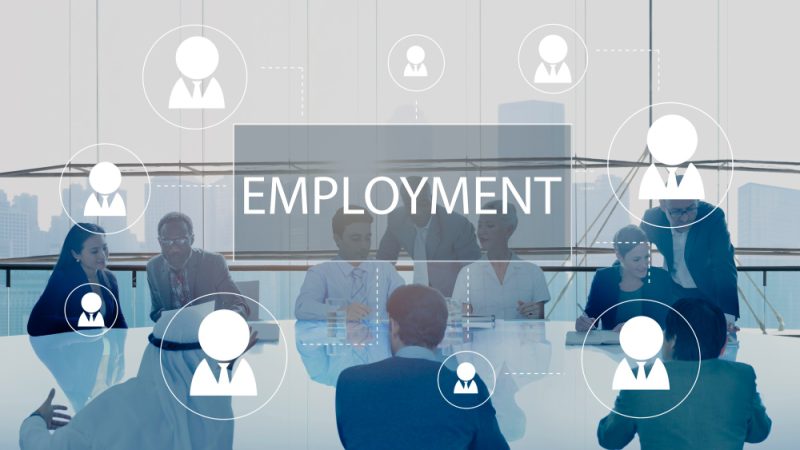Agile Workplaces: Why are they more relevant than ever?

Let’s face it: Productivity isn’t defined by the punch time tabs anymore. The amount of time that workers spend on their work is also defined by how enrichingly they contribute to the overall output. In 2020, when the world is defined by mobility and fluidity, there has been a massive shift in the nature of work, taking care of the needs of the workers has also evolved. As an employer, you need your employees to work smarter, in a minimalist environment. That’s exactly what agile workspaces are.
If you’re still wondering how it all works, remember the point of agile workspaces is the implementation of flexibility in all aspects of a conventional office, that facilitates the format of getting work done at the stage it is at. With the rise in the number of coworking spaces, the traditional concept of 9 to 5 working hours don’t work anymore. Leaner teams with experts working from one project to another, operating from a shared space with motivated workers in related domains have now become a go-to for large enterprises who are trying to yield higher levels of quality in their work.
Characteristics of an agile environment
An agile workspace is one where employees are comfortable and have a design that nurtures creativity and technology in all scales and stages, right from when they choose to get on board. These can be laid out with key characteristics that describe what makes a workspace agile:
- Access: Fluidity comes with ease of access. Moving from one space to another needs to be seamless in such spaces, as anything less could mean putting up walls between processes. Moreover, employees may feel creative blockage that can get reflected in their work, when they’re working from confined spaces.
- Breathable: Sometimes employees may find themselves unsettled or trying to adapt to a new workspace. It could mean delays in the workflows. Therefore, your workspaces need to be comfortable places that can keep your employees happy and focused on the task at hand.
- Peaceful: It’s interesting to note how traditional office spaces fail in providing a much-needed quiet, private environment to employees. On the other hand, in an agile workspace, peaceful environments are given to all employees.
- Accommodative: What if your employees prefer to stand and work instead of sitting all of the time? Or what should you do if your employees don’t want a seating routine, and instead prefer taking community seats today? Agile workspaces are the perfect place to work around your employees’ common needs and improvise accordingly.
Any working agile workspace stands on the three pillars of quick thinking, collaboration, and trying out new things. However, agility with scarcity may only lead to more and more confusion for your employees. Therefore, it requires taking well-thought-out decisions that can help you to keep things convenient for them and under control.
Agile Workspaces: Differentiator
Is it all about the open designs that make agile workspaces work? Or is it something that lies beneath the surface of agile spaces? Unlike traditional offices, agile workspaces are governed entirely by the following goals:
- Adapting to changes over sticking to the plan
- Collaborative individuals and interactions over tools
- Efficient use of technology over extensive documentation
- Customer inputs over agreement negotiation
The above cyclical features make agile workspaces what they are. There’s always a balance of professionalism and exciting work underway. Once a project is taken in an agile environment the process is fast-paced and completely accessible at all times. That brings us to the benefits of such spaces:
Originality and Collaboration
As mentioned above, agile workspaces may have open, eclectic designs, but they do promote a private and quieter work environment that brings out the individuality in your employees. There’s also a large influence of collaboration among employees to contribute to a task at hand, thus being more approachable in comparison to conventional workspaces.
Custom Teams
There’s a diverse hierarchy that exists in teams in an agile environment where flexibility is the key. Employees can come in at any stage of the project, be it brainstorming or deployment. By shuffling chairs, or working on a sprint in a meeting room – everything works for the best in an agile environment.
Brings both Boomers and Millennials to the Table
Agile workspaces don’t discriminate based on age. In fact, it is a concept of a working environment with communication in its center. In a team, that can mean leveraging each other’s strengths and working through different perspectives. In a conventional office, such collaboration isn’t facilitated by the strict hierarchy and work culture.
Target Work areas
There are multiple ways in which different employees of your team may prefer working in a totally distinct work setting. Some may prefer to work from the shared desks, while others may prefer the zen of their cubicles. The ability to transition from one area to another, with an unaffected focus is what agile work environments nourish, for all its employees.
Bottom line
Agile workspaces come with a range of pros in terms of productivity and upskilling your employees while prioritizing their needs and well-being. Such steps ultimately lead to better business and professionalism. Well-designed, flexible offices can also lead to transforming the team’s perspectives on collaboration which may start reflecting positively in their work. If you’re looking for such a productive coworking space in Kolkata, get in touch with Zioks. They’re pioneers in designing workspaces that create a work positive environment for employees from different backgrounds and skills. You may also find their blog on corporates in coworking spaces a helpful read to understand the corporates’ perspective on coworking spaces through time.





